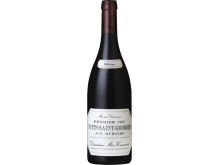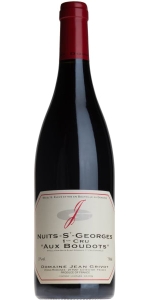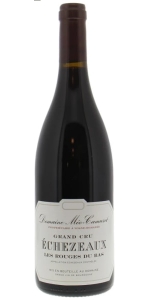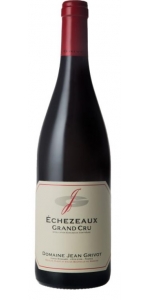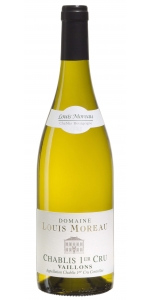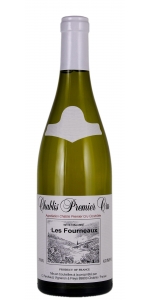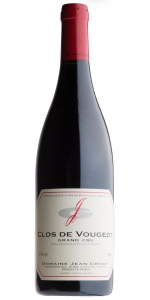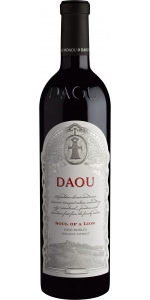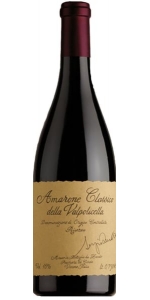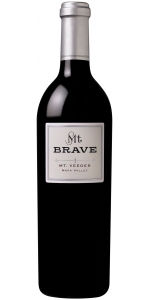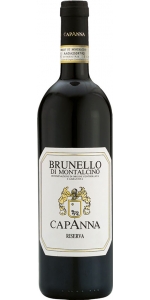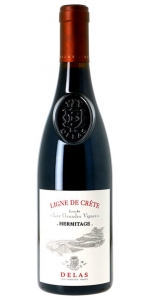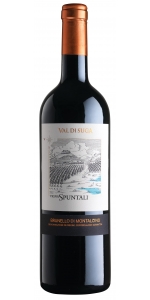Domaine Meo-Camuzet Nuits-St-Georges Aux Murgers Premier Cru 2020
| Country: | France |
| Region: | Burgundy |
| Winery: | Meo-Camuzet |
| Grape Type: | Pinot Noir |
| Organic: | Yes |
| Vintage: | 2020 |
| Bottle Size: | 750 ml |
Domaine Jean Grivot Nuits-Saint-Georges Premier Cru Aux Boudots is made from 100 percent Pinot Noir.
Domaine Jean Grivot is among the great names in Burgundian wine. Étienne Grivot and his wife Marielle took over from Étienne’s father Jean Grivot in 1987. The vineyards are densely planted and farmed organically “sans certification” while the aim in the cellar is for balance and clear expression of terroir.
Jean Grivot’s 38.3 acres spread across 22 appellations with vineyards in the communes of Vosne-Romanée, Vougeot, Chambolle-Musigny, and Nuits-Saint-Georges. Besides the three grand crus, there are 8 premier crus including the much lauded Les Beaux Monts and Suchots in Vosne-Romanée. The grapes are completely de-stemmed and fermentation is spontaneous.
Nuits-Saint-Georges Aux Boudots 1er cru lies in the “Zone Vosnoise” or northern end of Nuits-Saint-Georges just below Les Damodes. It borders Vosne-Romanée Aux Malconsorts 1er just to its north. Its position slightly lower on the slope with deep soil full of pebbles results in a richer and fuller wine.
The grapes are destemmed and maceration à froid usually lasts just a day or two. The alcoholic fermentation is spontaneous and malolactic fermentation occurs in barrel. Depending on the vintage, the proportion of new oak is around 30-60% for the premier crus.
The wine shows aromas and flavors of red berries, herbs, and purple flowers. The palate is rich with ripe fruit and medium weight with bright acidity and fine tannins. Aging in 30-60% new Burgundian pièce brings notes of vanilla, toast, and baking spices.
Red Burgundy might be the world’s most flexible food wine. The wine’s high acidity, medium body, medium alcohol, and low tannins make it very food-friendly. Red Burgundy, with its earthy and sometimes gamey character, is a classic partner to roasted game birds, grilled duck breast, and dishes that feature mushrooms, black truffles, or are rich in umami.
Reviews:
‘The 2020 Nuits Saint-Georges Aux Boudots Ter Cru has the best aromatics among Grivat Nuits Saint-Georges with very well defined red berry fruit, briary and lignt sous-bois aromas. The palate is medium-badied with fine-grain tannins, slightly savory on the entry, fresh and saline on the finish. This has real verve and class, though it will benefit from time in bottle
-Vinous 93-95 Points
A wine with the substance and structure to support the generous lashings of new oak used for maturation, and the overall effect is elegant and classic in style. Aux Boudots, where Grivot has 0.85ha, is at the northern edge of Nuits, just over the border from Vosne-Romanée Malconsorts. They began to pick on the 3rd of September – Etienne specified that they are very particular that the tannins are ripe and do what they can to prolong the vegetative cycle. Still, the grapes were picked with an entirely correct pH of around 3.4.
-Decanter 94 Points
Échezeaux is loyal to its appellation through the finesse of its attack on the palate and its overall balance. But it's also a wine with pronounced acidity, which gives it freshness and structure and bestows upon it a sometimes austere finish.
Domaine Jean Grivot Echezeaux Grand Cru is made from 100 percent Pinot Noir.
Domaine Jean Grivot is among the great names in Burgundian wine. Étienne Grivot and his wife Marielle took over from Étienne’s father Jean Grivot in 1987. The vineyards are densely planted and farmed organically “sans certification” while the aim in the cellar is for balance and clear expression of terroir.
Jean Grivot’s 15.5 hectares spread across 22 appellations with vineyards in the communes of Vosne-Romanée, Vougeot, Chambolle-Musigny, and Nuits-Saint-Georges. Besides the three grand crus, there are 8 premier crus including the much lauded Les Beaux Monts and Suchots in Vosne-Romanée. The grapes are completely de-stemmed and fermentation is spontaneous.
About the Vineyard:
Echézeaux grand cru is a large vineyard of 38 hectares divided into 11 individual climats. Grivot’s parcel is in the climat of Les Cruots and lies at the southern end of Echézeaux near the premier cru of Les Suchots. A good Echézeaux should have rich fruit, considerable earthiness, and be very complete on the palate.
Tasting Notes:
The wine shows aromas and flavors of red berries, herbs, and purple flowers. The palate is rich with ripe fruit and medium weight with bright acidity and fine tannins. Aging in 40-70% new Burgundian pièce brings notes of vanilla, toast, and baking spices.
Food Pairing:
Red Burgundy might be the world’s most flexible food wine. The wine’s high acidity, medium body, medium alcohol, and low tannins make it very food-friendly. Red Burgundy, with its earthy and sometimes gamey character, is a classic partner to roasted game birds, grilled duck breast, and dishes that feature mushrooms, black truffles, or are rich in umami.
Review:
A very elegant expression of Echezeaux, with a velvety black plum and rose petal fruit. There is a lovely freshness and so much finesse that the tannin and structure might surprise you at the end. This has the substance to age for decades. Produced from a 0.84ha parcel in Cruots next to Comte Liger-Belair. The vines were planted in 1954 and the destemmed fruit was gently fermented.
This is pure, racy and enticing, hosting aromas and flavors of black currant, blackberry, violet and iron. This is about finesse, grace and precision balance, with saturated fruit flavors persisting on the superlong aftertaste. Needs a decade in the cellar.
-Wine Spectator 97 Points
Domaine Louis Moreau Chablis Vaillons Premier Cru is made from 100 percent Chardonnay.
Chablis achieves its highly distinctive mineral character due to its cool northerly climate and its highly calcareous soil. The Domaine Louis Moreau Chablis Vaillons Premier Cru is a generous, fleshy and lively wine that displays a beautiful balance of minerality, fruitiness and elegance.
Chablis, with its steely character and fresh citrus flavor, pairs well with white fish and shellfish and its naturally high acidity can counterbalance cream-based sauces. Unoaked Chablis lends itself well to vegetables, starches, Comté, or fresh goat cheese.
Perchaud Chablis Premier Cru Fourneaux is made from 100 percent Chardonnay.
This is the south facing portion of the slope and very hot, heavy "Fourneaux" or "oven" effect.
The wine is expressive and vivacious with beautiful aromas.
Well-balanced, round and fruity wine with a fine minerality on the finish.
1er Cru Fourneaux is located on the Fleys village and faces the field. the plots are very steep and exposed full south on soil type Kimmeridgian consists of marl clay-limestone with shallow ground and a very stony ground. After a slight settling, the juice starts its fermentation in tank, then ¼ of juice is racked in barrels. Both wines perform their alcoholic fermentation and malolactic and their aging on the lees, separately. The two cuvées are blended six months after harvesting. The wine is then filtered and is bottled 15 months after harvesting. 2013 Conditions and Harvest The relatively high temperatures at the end of winter allowed an early bud vines in early March. With a hot, dry spring flower took place in good conditions. In July, a hailstorm located did some damage to our Fourchaume plot. July and early August, rainy and stormy brought the water needed by the vineyards. The dry and sunny weather of the second half of August brought the grapes to maturity. The harvest began on September 2 under cloudy skies.
Coquille St. Jacques (scallops) with leeks and cream.
Domaine Jean Grivot Clos de Vougeot Grand Cru is made from 100 percent Pinot Noir.
Domaine Jean Grivot is among the great names in Burgundian wine. Étienne Grivot and his wife Marielle took over from Étienne’s father Jean Grivot in 1987. The vineyards are densely planted and farmed organically “sans certification” while the aim in the cellar is for balance and clear expression of terroir.
Jean Grivot’s 38.3 acres spread across 22 appellations with vineyards in the communes of Vosne-Romanée, Vougeot, Chambolle-Musigny, and Nuits-Saint-Georges. Besides the three grand crus, there are 8 premier crus including the much lauded Les Beaux Monts and Suchots in Vosne-Romanée. The grapes are completely de-stemmed and fermentation is spontaneous.
About the Vineyard:
Clos de Vougeot grand cru was acquired by Étienne’s grandfather, Gaston Grivot, in 1919. The total holding is 4.6 acres from the middle of the vineyard to the lower wall and the average vine age is 40 years old. A good Clos de Vougeot should be a complete wine without any one feature standing out. It is a perfect balance of power, aroma, and flavor.
Wine Production:
The grapes are destemmed and maceration à froid usually lasts just a day or two. The alcoholic fermentation is spontaneous and malolactic fermentation occurs in barrel. Depending on the vintage, the proportion of new oak is around 40-70% percent for the grands crus.
Tasting Notes:
The wine shows aromas and flavors of red berries, herbs, and purple flowers. The palate is rich with ripe fruit and medium weight with bright acidity and fine tannins. Aging in 40-70% new Burgundian pièce brings notes of vanilla, toast, and baking spices.
Food Pairing:
Red Burgundy might be the world’s most flexible food wine. The wine’s high acidity, medium body, medium alcohol, and low tannins make it very food-friendly. Red Burgundy, with its earthy and sometimes gamey character, is a classic partner to roasted game birds, grilled duck breast, and dishes that feature mushrooms, black truffles, or are rich in umami.
Review:
This round version is packed with ripe black cherry, violet, graphite and tobacco flavors. The silky texture and vibrant acidity work in tandem, while refined tannins provide support without getting in the way. There are a few edges to be worked out, yet this is long and concentrated.
-Wine Spectator 95 Points
A clearly pronounced personality: powerful, sometimes wild aromas; a marked acidity, which give it a captivating freshness; a fine roundness, sometimes even opulence. In short, an intense wine which has many cards in its hand to win you over.
Review:
Notes of cherries, cassis, peonies and rich spices preface the 2020 Nuits-Saint-Georges 1er Cru Aux Murgers, a medium to full-bodied, velvety and concentrated wine that's lively and penetrating. Like its 2019 predecessor, it's especially seamless and charming.
-Robert Parker's Wine Advocate 92-94 Points
For more than four centuries, the members of the Méo family have devoted themselves to growing vines and making wines. They came originally from the Burgundy village of Selongey, in the north of Côte d'Or, where today, even if the vines, alas, have disappeared, a pressing house, dating from the year 50 AD, bears witness to the presence there of Gallo-Roman winegrowers.
From the 19th century onwards, the Méo children chose the course of study. The great-grandfather of Jean-Nicolas, for example, was a primary-school teacher, his grandfather graduated from the École Nationale des Ponts et Chaussées (civil engineering) and his father, Jean Méo, was a graduate of the École Polytechnique and an engineer in the Corps des Mines. Jean was later to be elected a Member of the European Parliament and sat on the Council of Paris.
It was thanks to Jean Méo's mother, Marcelle Lamarche-Confuron, originating from an old winegrowing family in Vosne (with already a small activity as négociants), that the Méos came to settle in Vosne-Romanée.
Jean Méo's grandmother was the first cousin of Étienne Camuzet, a very colourful character.
Étienne Camuzet (1867-1946) was a winegrower in Vosne-Romanée, mayor of the village and also an MP for Côte d'Or from 1903 to 1932. In 1920, he had the opportunity to purchase the Château du Clos de Vougeot with some of the vines, but instead of living there, he preferred to lodge his tenant farmers in it (indeed, because of his political activities, he no longer had time, himself, to look after his own vineyards). He was to sell it in November 1944: not surprisingly, the château had suffered during the war. He had (already!) understood the importance for Burgundy to have a "temple” to help promote its wine. Étienne Camuzet thus chose to pass it on to the Confrérie des Chevaliers du Tastevin.
As for the vines, it was the 20 hectares (50 acres) at the top of the Clos that were for sale ... Étienne Camuzet enlisted the help of his fellow winegrowers from Vosne-Romanée to acquire them. He would keep 3 hectares (7.5 acres) himself, immediately below the château.
Following the death of Étienne Camuzet, his daughter, Maria Noirot, inherited the estate from her father and retained the tenant farmers. She had no children, however, and when she died, in 1959, she bequeathed the estate to her nephew, Jean Méo, who at that time had already left Vosne-Romanée, and since 1958 had been a member of General de Gaulle's cabinet. Having been regularly in close contact with his uncle, who had shared with him his passion for the vine, teaching him to respect and love wine, the youngest of the Méos could not allow the winegrowing saga of the family to come to an end. He decided, therefore, to take the estate in hand, with help from his father, Gaston, initially, and then from his mother. In that way, Jean Méo was able to remain with General de Gaulle and to pursue his career in Paris, which would lead him to manage in succession several large companies: ELF, France Soir, Agence Havas, Institut Français du Pétrole and others. He was also elected to the European Parliament and sat on the Council of Paris. Throughout that period, he relied on four tenant farmers, including the great winegrower, Henri Jayer, who was one of the first to control temperatures systematically during vinification, always bringing out the freshness and the fruit, thus making the nose and the texture of the wine more attractive. Jean Méo was to manage the estate from 1959 to1984, after which he called upon the new generation.
In 1981, the Camuzet estate became Méo-Camuzet, and the first wines bottled under that name were those of the 1983 vintage.
DAOU Vineyards Soul of a Lion is made from 78% Cabernet Sauvignon, 12% Cabernet Franc, 10% Petit Verdot.
The 2019 Soul of a Lion is a blockbuster vintage that showcases how Bordeaux varieties are remarkably suited to the terroir of DAOU Mountain. This wine explodes from the glass with a kaleidoscope of aromas and flavors, including blackberry, blueberry, black currant, dark cherry, sweet tobacco, and licorice. An added floral dimension imparts an integrated sense of elegance and freshness. While full-bodied with ultra-high phenolic levels, this wine maintains its evenness and poise through an extraordinarily long finish. Structured, balanced, and powerful, the 2019 Soul of a Lion will reveal its full magnitude after several years of careful cellaring.
Review:
The 2019 Soul Of A Lion is a blend of free-run Cabernet Sauvignon, Cabernet Franc, and Petit Verdot, aged 22 months in 100% new French oak. Opaque ruby in color, it offers aromatic contrast between dark, savory cherry fruit, chargrill and graphite, and top notes of green pepper and rose petals. The palate explodes with detailed flavors and its tannins are already resolved and chocolaty, with seamless acidity and exotic spicy layers emerging on the extended finish. Wow!
-Wine Advocate 97+
Ruby red in color, this Amarone Riserva offers dense and smokey aromas of dark cherries, raisins, chocolate, and anise, framed by fruity tannins and a spicy finish. With the level of complexity and balance that this wine shows, it will evolve beautifully for 10+ years.
Review:
This is one of those wines where your nose is in the glass for ages, enjoying the complex array of aromas that range from raspberries to dates, perfumed bark to polished wood, pressed flowers to fresh mushrooms. Full-bodied, dense and focused with fine, well-integrated tannins, plenty of fruit flavor and an endless finish. A joy to drink even now, but this will age gracefully for many a year.
-James Suckling 98 Points
Mt Brave Malbec is made from 100 percent Malbec.
On the Palate of the 2016 Mt. Brave Malbec killer spice overlays rich boysenberry and black currants. A pop of fruit carries across to the finish which is clearly mountain structure based.
Review:
The 2016 Malbec Mt. Veeder is another fabulous wine from winemaker Chris Carpenter. It offers a vibrant, focused, savory style in its blue fruits, graphite, and lead pencil aromatics, and has a concentrated, layered style on the palate. It’s a complex, age-worthy Malbec that will evolve for over a decade.
-Jeb Dunnuck 96 Points
The 2016 Malbec Mt. Veeder (100% Malbec) is very deep purple-black in color and reveals stunning black and red cherries, black plums and violets with wafts of unsmoked cigars and mossy bark. Full, concentrated and seductive in the mouth, it has a solid line of fine-grained tannins and loads of bold, perfumed fruit, finishing long. 484 cases produced.
-Wine Advocate 95 Points
This shows a vivid boysenberry and blackberry fruit profile, laced with licorice, roasted apple wood and violet notes, all backed by a solidly grippy structure and a late zing of minerality. Best from 2021 through 2038. 6,441 cases made.
-Wine Spectator 94 Points
Capanna Brunello di Montalcino Riserva 2015
TYPE: DOCG
BLEND: 100% Sangiovese carefully selected in the oldest vineyards and only of the best harvests.
VINIFICATION:
Alcoholic fermentation with maceration of the skins (30-35 days) at a controlled temperature and spontaneous malolactic fermentation, both in truncated cone-shaped Slavonian oak vats.
AGEING:
In Slavonian oak casks of 10 to 25 hl for over 40 months; followed by ageing in bottles for at least 15 months.
NOTES:
Colour: deep ruby red, strong, lively.
Bouquet: very intense and complex, fruity and spicy, with red fruit, jam and liquorice shades; great prospects of future development.
Taste: great structure in the acid-tannin components, well supported by the soft ones; extremely persistent.
Food pairings: roast red meats, game and very aged cheeses.
Review:
Powerful, sparkling garnet red. Rich, very appealing nose with notes of ripe raspberries and fresh plums, some liquorice and fine spice notes in the background. Grippy, fine-meshed tannin on the palate, builds up in many layers, salty, good tension, very long finish in the finish.
- Falstaff 98 Points
Delas Hermitage Les Grandes Vignes Ligne de Crete is made from Syrah.
The nose discloses aromas of spice and leather intertwined with deep berry aromas (blackberry, redcurrant) and heady floral notes, liquorice and incense. Its richness, complexity and elegance are by no means a contradiction. The finest granite soils of the Hermitage hillside are to thank for this wine's incredible minerality and finesse. The wine is rich and dense on entry to the palate, where it shows an elegant, broad and flavorsome character. The ripe, smooth and well-integrated tannins contribute to the wine's powerful yet harmonious structure. The palate reveals the same aromas as those found on the nose with nuances of blueberry, raspberry, violet and bitter chocolate. Ligne de Crête is characterized by its exceptional structure, harmony and balance.
This remarkably smooth and elegant wine makes the perfect partner for a pigeon pie, beef tartare ravioli or a roast fillet of deviled duckling with cranberries. It also makes an excellent choice for woodcock, hare "à la Royale" or even a roast rack of lamb in a herb crust.
Review:
Whiffs of espresso, ore and charred meat mingle into thunderous flavors of crème de cassis and roasted plums in this wine. A single-site expression of Les Grandes Vignes from a ripe yet fresh vintage, it's a showstopping Syrah marked with a creamy texture and ripe tannins. Hermitage is not known for youthful pleasures but this rare bottling embraces the hedonism of adolescence along with its potential to gain power and complexity far beyond 2050. Anna Lee C. Iijima
-Wine Enthusiast 97 Points
Inky ruby color. Expansive, smoke- and mineral-accented black and blue fruits, licorice, smoky bacon, mocha, violet and licorice on the highly perfumed nose. Appealingly sweet, mineral-accented cassis, boysenberry, fruitcake, floral pastille and vanilla flavors show superb depth and become spicier with aeration. Shows superb detail and mineral lift on the youthfully tannic, extremely persistent and incisive finish, which features resonating floral and exotic spice notes.
-Vinous 97 Points
This is a 6 pack with 2 bottles each from vintages from 2013, 2015, and 2016.
***Tenimenti Angelini Val di Suga Vigna Spuntali Brunello di Montalcino 2016:
The 2016 Vigna Spuntali Brunello di Montalcino is the most brooding of the lineup from Val di Suga and is sourced from the southwest of the region on sandy soils. There are aromatics of black raspberry, licorice, menthol, sage, cinnamon, and iron-rich earth. Its Mediterranean influence is felt on the palate with ripe black cherry, dried herbs, and sun-baked earth. This is the fullest bodied and most savory of the Val di Suga lineup, with more roundness and grip. Its structure will benefit from cellaring for several years and will be great drinking over the next 20 years or more. 2026-2040.
-Jeb Dunnuck 96 Points
***Tenimenti Angelini Val di Suga Vigna Spuntali Brunello di Montalcino 2015:
The 2015 Vigna Spuntali Brunello di Montalcino is more introverted on first opening, with notes of black plum, licorice, dried Mediterranean herb, and sun-baked earth. On the palate, it offers a tart dried fruit character, with a building tannin structure that finishes with tomato leaf, and bitter herbs. The most rustic and burly of the wines in the lineup of the 2015 Val di Suga vintage, it will benefit from allowing some time in cellar to see how this matures and its tarriness develops. Drink 2026-2036
-Jeb Dunnuck 94 Points
***Tenimenti Angelini Val di Suga Vigna Spuntali Brunello di Montalcino 2013:
Plenty of spices and fresh herbs on the nose, such as dried rosemary and nutmeg, to match the underlying dried redcurrants and cranberries. Full-bodied with plenty of concentration, but still shows a very sturdy, tannin backbone and punchy acidity, to drive this through to a long finish. Drink in 2021.
-James Suckling 94 Points
- back
Domaine Michel Magnien Cote de Nuits-Villages is made from 100 percent Pinot Noir.
Domaine Michel Magnien has evolved into a Burgundy producer of a singular style and philosophy from cellars located in the village of Morey-Saint-Denis. In 1993, Frédéric Magnien persuaded his father Michel to begin domaine bottling. The domaine is now certified biodynamic by Demeter and the wines are produced without the use of new oak.
The domaine’s 45 acres are spread across the villages of Morey-Saint-Denis, Gevrey-Chambertin, Chambolle-Musigny, and Vosne Romanée, with holdings in several premier cru and grand cru vineyards. These include the grand crus Clos de la Roche, Clos Saint-Denis, and Charmes-Chambertin. Frédéric Magnien maintains an average vine age of 50 years.
Côte de Nuits-Villages is from two climats in Brochon: Créole, Les Carrés. Brochon is a neighboring commune of Fixin and Gevrey-Chambertin and often carries similar characteristics of those two villages. The wine was fermented with indigenous yeasts in stainless steel tanks followed by several months aging in 100% used pièce. Around 20% whole clusters were included in the cuvée.
Côte de Nuits-Villages shows bright and fresh red-fruit character with notes of earth and spice. 50-year-old vines contribute weight and richness to this otherwise fresh-tasting Burgundy unadorned with the taste of new oak. It’s a pure expression of red Burgundy from biodynamically farmed grapes.
Red Burgundy might be the world’s most flexible food wine. The wine’s high acidity, medium body, medium alcohol, and low tannins make it very food friendly. Red Burgundy, with its earthy and sometimes gamey character, is a classic partner to roasted game birds, grilled duck breast, and dishes that feature mushrooms, black truffles, or are rich in umami.
Tasting Notes
This Pinot Gris is filled with great fruit intensity of ginger spice and pear drop aromas, beautifully balanced with a smooth juicy finish. A wine to be enjoyed on any occasion.
Winemakers Notes
Following harvest the fruit was fermented in batches using a number of fermentation techniques, including barrel fermentation (10%), on skins fermentation (90%), and lees aging for five months. The resulting blend of these techniques has resulted in a rich and complex Pinot Gris with concentration and balance.
Alcohol %
13.5%
Food Matching
Chicken Tikka Masala or sticky sesame prawns with a spicy sauce.

